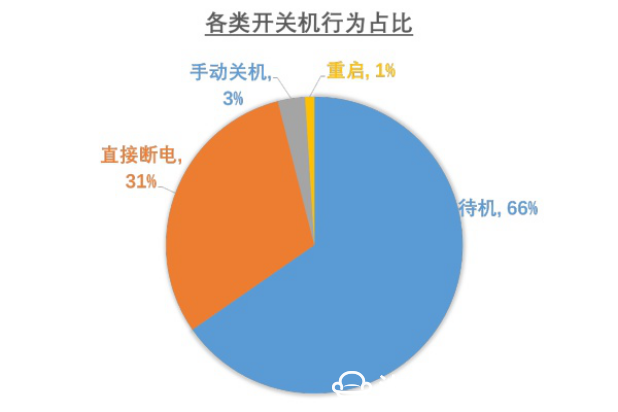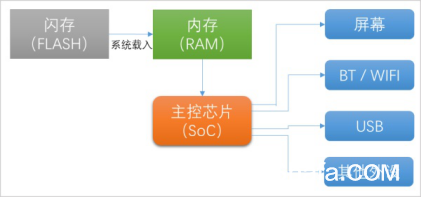Nowadays, smart TVs are becoming more and more popular, which adds many functions to traditional televisions. TVs are not limited to "watching TVs," but they also make the entire smart TV system more complicated, which in turn affects the speed of startup. Currently, general smart TVs in the market are powered on, lighted up, loaded on the Android system, and presented on the screen. Generally, they take more than 20 seconds, and some even close to 30 seconds before they can be started. Compared to the 5 to 8 second boot speed of traditional TVs, Many consumers criticized.

However, from a technical point of view, the enhancement of the function will inevitably bring about the increase in the size of the system, just as the computer's Windows operating system has been upgraded from 95, 98, XP, Vista, Windows 7, Windows 8, and Windows 10 to enhance functions, and it has also caused the system to Gradually become larger and longer boot time. Or, as with smart phones, constantly downloading and installing new applications and services will also cause the system to become larger and larger, which in turn will affect the loading time of the entire system at startup.
So, users want to have a powerful smart TV, but also want to have a "second start" boot speed, is it possible?
The answer is certainly yes.
The author extracted the big data of the user's operation of the switch machine and found that nearly 70% of the users are uninterrupted when they are turned off (as shown below).

Therefore, we can realize the fast start-up like a traditional TV by using the standby start function of STR (Suspend to RAM), and it does not consume power.
STR how to achieve a quick boot?
To explain why STR can solve our problems, we need to explain the architecture of the system and the startup process:

1. The main three modules of smart TV system operation: "master chip", "memory", "flash memory"
2. When the power is off, the system and program are stored in the "flash memory"
3. After power-on, the operating frequency of the "master chip" is much higher than that of "flash memory." In order for the system to operate at high speed, the system must be loaded from the "flash memory" into "memory."
4. The "master chip" reads the corresponding program in "memory" and performs corresponding configuration and control of peripherals, such as lighting the screen, turning on WiFi and Bluetooth, etc.
5. Peripheral configuration completed, the system enters the user operable state (Working State)
The STR is shut down, in addition to the "memory" module is powered off, the remaining modules are powered off, and the "memory" module continues to power the results of the work will remain information, when the system is restarted, the system starts the process It is possible to skip the process of loading "flash memory" into "memory". Most of the peripherals do not need to be reconfigured and go directly back to the state before the last shutdown.
The author tests with the actual micro-whale TV D series 55D, and the actual booting speed is as follows:

It can be clearly seen that the small whale TV 55D uses the STR to reduce the boot time to 5.6 seconds, saving users about 20 seconds per boot, and increasing the boot speed by 80%. Industry news is the next generation of the system platform for micro-whales, even reaching an amazing start within 3 seconds.
Look at the comparison with several smart TVs:

Will the power-up acceleration consume power?
When importing the STR function, it is still necessary to supply power to the "memory" module when shutting down, so it is impossible to completely power off the 0W. However, we still strictly control the standby power consumption below 0.45W. what is this concept? When converted to electricity consumption, the standby power consumption per month is as follows:
· 30 days x 24 hours x 0.45W (TV standby power consumption) / 1000W x 1 hour (1 kWh) = 0.324 degrees
· 0.324 kWh x 0.6 yuan (a one-time price) = 0.1944 元
With less than 2 cents per month, and no increase of 3 dollars per year, you can save 20 seconds of boot waiting time. Do you think it is worth it?
Smart TV/box information can focus on smart TV information network sofa butler (http://), China's influential TV box and smart TV website, providing information, communication, etc. on TV boxes, smart TVs, smart TV software, etc. Answer questions!
High Rate Nicd Battery KPH Series
Established in 1956, during the China first five-year-plan, Henan Xintaihang Power Source Co., Ltd. (Factory No.755) was the first R&D and manufacturing enterprise in China in the field of alkaline storage batteries and modular power system and it was also the military factory which owned the most varieties rechargeable batteries in domestic. Taihang was located in national Chemistry and Physicals Power Source Industrial Park, Xinxiang City, Henan, China.
High Dishcharge Rate Nickel Cadmium Battery, KPH20~KPH500, Max. discharge current <5C
The nickel–cadmium battery (NiCd battery or NiCad battery) is a type of rechargeable battery using nickel oxide hydroxide and metallic cadmium as electrodes. The abbreviation NiCd is derived from the chemical symbols of nickel (Ni) and cadmium (Cd).
Rechargeable Nicd Battery,High Discharge Rate Nicd Battery,Nicd Battery For Start Power,Lph350Ah Battery
Henan Xintaihang Power Source Co.,Ltd , https://www.taihangbattery.com